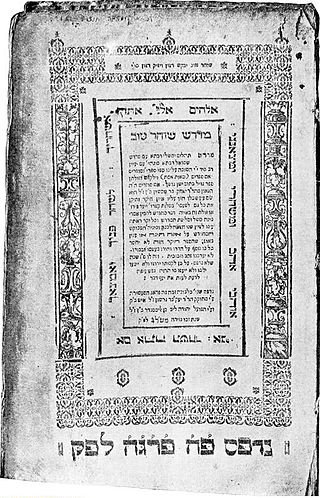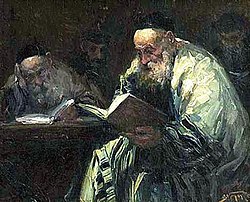
Shir ha-Shirim Rabbah is an aggadic midrash on Song of Songs, quoted by Rashi under the title "Midrash Shir ha-Shirim". It is also called Aggadat Hazita, from its initial word "Hazita", or Midrash Hazita.

Midrash Tehillim, also known as Midrash Psalms or Midrash Shocher Tov, is an aggadic midrash to the Psalms.

Midrash Abkir is one of the smaller midrashim, the extant remains of which consist of more than 50 excerpts contained in the Yalkut Shimoni and a number of citations in other works. It dealt, according to all accessible evidence, only with the first two books of the Pentateuch.

Midrash Tadshe is a small midrash which begins with an interpretation of Gen. 1:11:
"And God said, Let the earth bring forth". R. Pinchas asked, "Why did God decree that grass and herbs and fruits should grow upon the third day, while light was not created until the fourth? To show His infinite power, which is almighty; for even without the light He caused the earth to bring forth [while now He creates all manner of trees and plants through the operation of the light]."

The Yalkut Shimoni, or simply Yalkut, is an aggadic compilation on the books of the Hebrew Bible. It is a compilation of older interpretations and explanations of Biblical passages, arranged according to the sequence of those portions of the Bible to which they referred.

The Midrash on Lamentations is a midrashic commentary to the Book of Lamentations.

Deuteronomy Rabbah is an aggadah or homiletic commentary on the Book of Deuteronomy.

A number of midrashim exist which are smaller in size, and generally later in date, than those dealt with in the articles Midrash Haggadah and Midrash Halakah. Despite their late date, some of these works preserve material from the Apocrypha and Philo of Alexandria. These small works, were in turn used by later larger works, such as Sefer haYashar (midrash). Important editors and researchers of this material include Abraham ben Elijah of Vilna, Adolf Jellinek, and Solomon Aaron Wertheimer.

Sifre Zutta was a midrash on the Book of Numbers. Medieval authors mention it under the titles "Sifre shel Panim Acherim" and "Vi-Yeshallehu Zutta"; and to distinguish from it the Sifre, Or Zarua calls the latter "Sifre Rabbati."

Midrash Petirat Moshe, also known as The Midrash of the Death of Moses, is one of the smaller midrashim. This midrash describes in great detail the last acts of Moses and his death, at which the angels and God were present. There are several recensions of it, dating to between 7th and 11th centuries. The first, published at Constantinople in 1516 begins with a brief exegesis by R. Samuel Naḥmani and R. Tanhuma of the first verse of the pericope "V'Zot HaBerachah", closing with its last verses, and doubtless intended for Simhat Torah.

Midrash Esfah is one of the smaller midrashim, which as yet is known only from a few excerpts in Yalkut Shimoni and two citations in Sefer Raziel and Ha-Roḳeaḥ.

Midrash Vayisau is one of the smaller midrashim. This small midrash, "the heroic legend of the sons of Jacob", is based on Genesis 35:5 and 36:6, and recounts the story of the wars of Jacob and his sons against the kings of the Amorites and against Esau and his army.

Midrash Samuel is an aggadic midrash on the books of Samuel.

Esther Rabbah is a midrash to the Book of Esther.

Midrash Eleh Ezkerah is an aggadic midrash, one of the smaller midrashim, which receives its name from the fact that a seliḥah for the Day of Atonement, which treats the same subject and begins with the words "ʾĒlle ʾEzkərā," recounts the execution of ten famous teachers in the time of the persecution by Hadrian. The same event is related in a very ancient source, Lamentations Rabbah, and also in Midrash Tehillim.

Midrash Maaseh Torah is one of the smaller midrashim, and contains compilations of doctrines, regulations of conduct, and empirical rules, arranged in groups of three to ten each and taken from various works. It is frequently found in manuscript, and has been edited at Constantinople (1519), Venice (1544), Amsterdam (1697), and elsewhere, while it has appeared more recently in A. Jellinek's B. H. and is contained also in the Kol Bo, where it frequently deviates from the Amsterdam edition even in the arrangement of its sentences.

Midrash Vayosha is an 11th-century CE midrash, one of the smaller midrashim. It is based on Exodus 14:30-15:18. It is an exposition in the style of the later aggadah, and seems to have been intended for Shabbat Shirah or for the seventh day of Passover.

Yalkut haMachiri is a work of midrash. Its author was Machir ben Abba Mari, but his country and the period in which he lived are not definitively known. Moritz Steinschneider says that Machir lived in Provence; but his date remains a subject of discussion among modern scholars. Strack & Stemberger (1991) say that the work was most probably composed in the late 13th or 14th century.

Allusions in rabbinic literature to the Biblical character Jonah, the unwilling prophet on whom the Book of Jonah centers, contain various expansions, elaborations and inferences beyond what is presented in the text of the Bible itself.

Shir ha-Shirim Zutta is a midrash on Shir ha-Shirim.






















![]() This article incorporates text from a publication now in the public domain : Singer, Isidore; et al., eds. (1901–1906). "Midrash Haggadah". The Jewish Encyclopedia . New York: Funk & Wagnalls.
This article incorporates text from a publication now in the public domain : Singer, Isidore; et al., eds. (1901–1906). "Midrash Haggadah". The Jewish Encyclopedia . New York: Funk & Wagnalls.